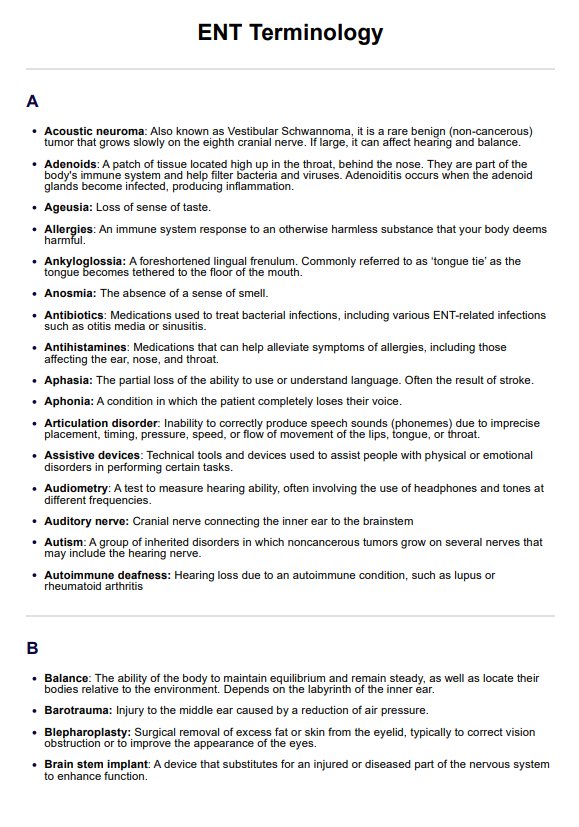An otolaryngologist, or ENT doctor, treats conditions affecting your head and neck, primarily those that involve the ears, upper throat and upper respiratory tract. These include (but are not limited to) sinus infections, balance disorders, ear infections, obstructive sleep apnea, swallowing disorders, and conductive hearing impairment.

ENT Terminology
Access a free and comprehensive glossary of ENT terminology to help reinforce your understanding of key ENT concepts and improve clinical communication.
ENT Terminology Template
Commonly asked questions
ENT refers to the medical study, diagnosis, and treatment of ear, nose, and throat disorders. This also extends to related structures of the head and neck, and encompasses invasive treatments such as reconstructive surgery as well as nonsurgical intervention.
It is important to stay updated with current medical literature and standards to ensure accurate terminology. This includes staying informed about new terms, abbreviations, and acronyms approved by professional organizations such as the American Academy of Otolaryngology-Head and Neck Surgery (AAO-HNS).
EHR and practice management software
Get started for free
*No credit card required
Free
$0/usd
Unlimited clients
Telehealth
1GB of storage
Client portal text
Automated billing and online payments











